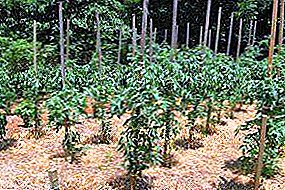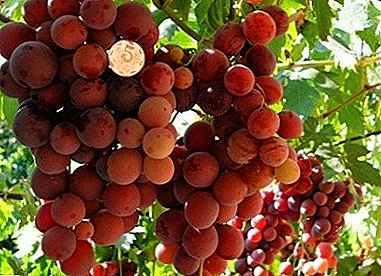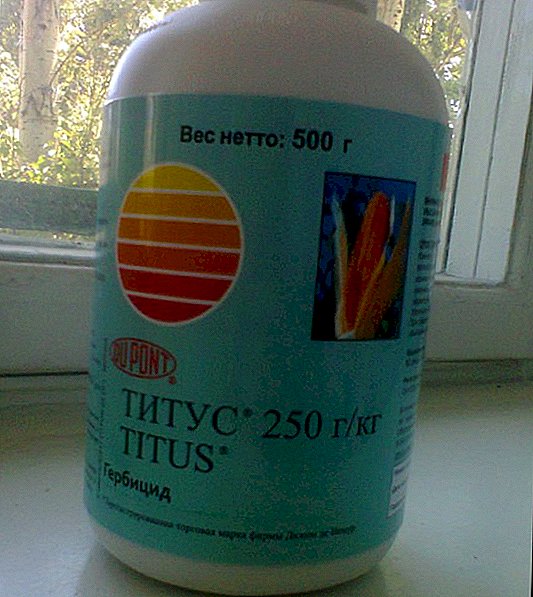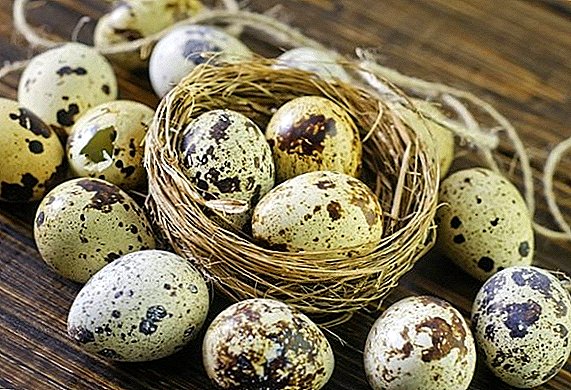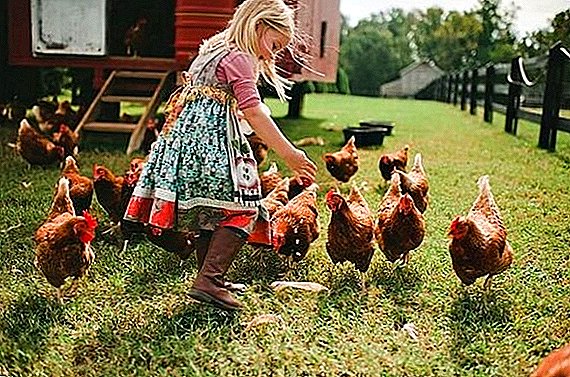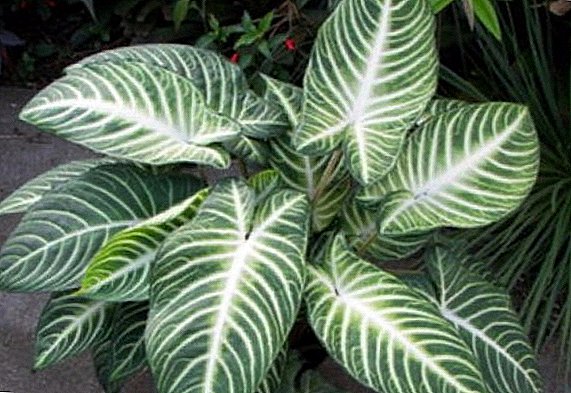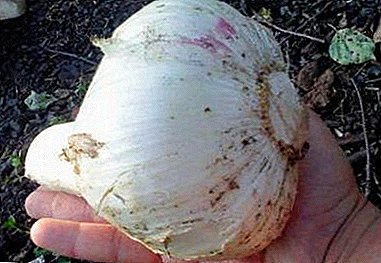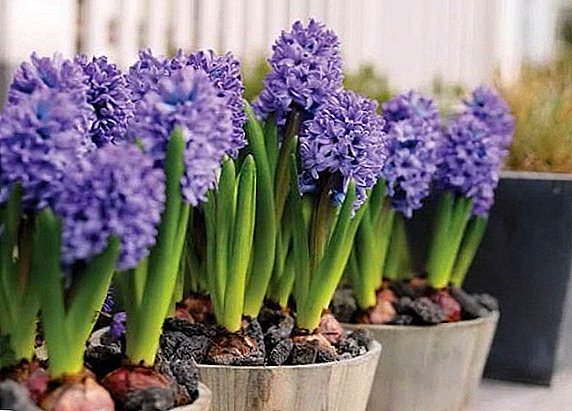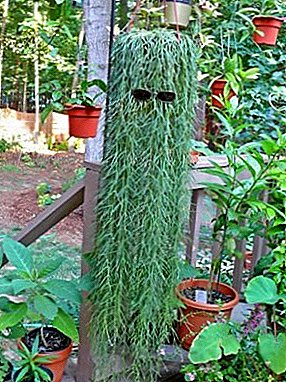
Hoya linearis is a beautiful plant, elegantly hanging from a pot. It was named after gardener Thomas Hoya, who took care of tropical plants at the court of the Duke in England. Under natural conditions it grows in the mountainous regions of Nepal, China, India, Burma.
Characteristic, description
Root system
Hoya linearis does not have a powerful root system - it expands in width, not in depth.
Stem
The flower produces long twisting stems that can be pulled out up to 6 meters and completely covered with leaves.
Leaves
Narrow, slightly down, about 5 cm long and 5 mm thick. The stalks are short, almost imperceptible at first glance. Color - gray-green, young leaves at first seem almost white.
Flowers

Creamy yellow, down. Usually in each inflorescence there are about 12 flowers, which are 1 cm in diameter. The smell is strong, pleasant, reminiscent of vanilla or lily. Hoya inflorescences appear on the tips of the stems, and after flowering they fall off.
Home care
This flower does not require close attention and the creation of special conditions.
Landing
Rooted cuttings are planted in small pots (usually 9 cm in diameter)in which the soil is poured from one part of sod land and sand, two parts of leafy earth and half a part of humus.
Transfer
Very often young hoiis are sold in a store with a special transport substrate. In this regard, it is recommended to transplant it a few days after purchase.
It is best to do this in April, once every 2-3 years. Nevertheless, abundant flowering occurs precisely in cramped pots.
Priming
Hoya needs breathable soil with good drainage. When using universal soil, it is best to mix perlite with peat or sand into it. For manual preparation it is necessary to take 1 part of sand, 2 parts of sod land and humus and 3 parts of leafy land.
Watering
Loves plentiful watering and humidityespecially during the period of active growth. Poorly suffers complete drying of the earthy coma - during flowering this can lead to a complete drop of the buds. In summer, the period of watering should be at least 1 time per week, in winter it can be limited to 1 time in 2 weeks. At the same time, stagnation of water should not be allowed - this will lead to decay of the root system and the death of the plant.
Air humidity

Hoya loves moisture, so it needs to be sprayed with warm water 1 time in 2 weeks. If the flower has grown to a solid size, then you can gently wash it in the shower.
Lighting
The plant loves bright light, which contributes to the quality of flowering, however, without any problems, it will grow in partial shade. It is best to place the pot in the southwest or southeast, in the summer, additionally protecting it from direct rays that are fraught with burns. Best duration light day for hoi - 14-16 hours - in the winter time it is worth taking care of additional lighting.
Thermal mode
Optimal temperature +24 degrees in summer. In the hotter and drier air the leaves curl and gradually fall off. In winter, a period of peace begins at Hoija Linearis, it is important to ensure the temperature here. air about 15 degrees. As a plant in the tropics, it does not like low temperatures - it adversely affects the root system. It is advisable to regularly ventilate the room, while the flower should not be in a draft.
Fertilizer and dressing
During the flowering period, the plant must be fed with mineral fertilizer. once every 2-3 weeks. Do not get carried away and carry out the procedure too often.
Breeding
Perhaps cuttings and seeds. When propagating by cuttings, it is better to use last year's sprout, on which there should be several knots and leaves.
For rooting the stalk can be placed in a plastic cup with water and wait for the appearance of roots.
Seeds taken for planting must be fresh.. Escape after sowing appears fairly quickly, and during this period it requires increased care. It is necessary to provide good lighting, stable temperature, avoid overflowing or drying out.
Bloom

With minimal care and compliance with the requirements for watering and temperature, it blooms a lot and willingly, from July to October. After that they fall off.
Pruning
Does not need the formation of pruning, because Hoya linearis blooms only at the ends of the branches. Cutting makes sense if it dried up, or for the sake of getting a cutting.
Smell
Flowers have a very pleasant vanilla smell.
Growth rate
Depends on many factors - room temperature, light intensity, feeding. On average, it can be from 15 to 45 centimeters per year.
Lifespan
The plant is a perennial.
Diseases and pests
Methods of treatment and struggle
With proper care, it is rarely a concern to the owner.
- All problems are usually associated with violation of conditions of detention:
- Yellow leaves - a sign of a sharp change in temperature, irrigation with cold water, strong waterlogging with stagnant water at the roots. It is necessary to ensure a stable air temperature, optimize the frequency of irrigation;
- Leaf drop - excessive watering. Often this happens in winter, when frequent, abundant watering continues;
- A white bloom appears on the leaves. - a sign of fungal disease. It is recommended to arrange a shower plant, spray it and prevent the soil from acidification. Existing bloom can be washed off with a soft sponge and treated with fungicides;
- Brown spots on leaves - defeat of the plant by pests, scab or thrips. Treatment is made only with the use of insecticides.
Blooming Hoya Linearis emits a pleasant vanilla flavor, and serves as an excellent decoration of the apartment. To care for it is not required to make serious efforts, the main thing is to comply with the conditions of temperature and watering.
A photo
Next you will see a photo of Hoya Linearis:







